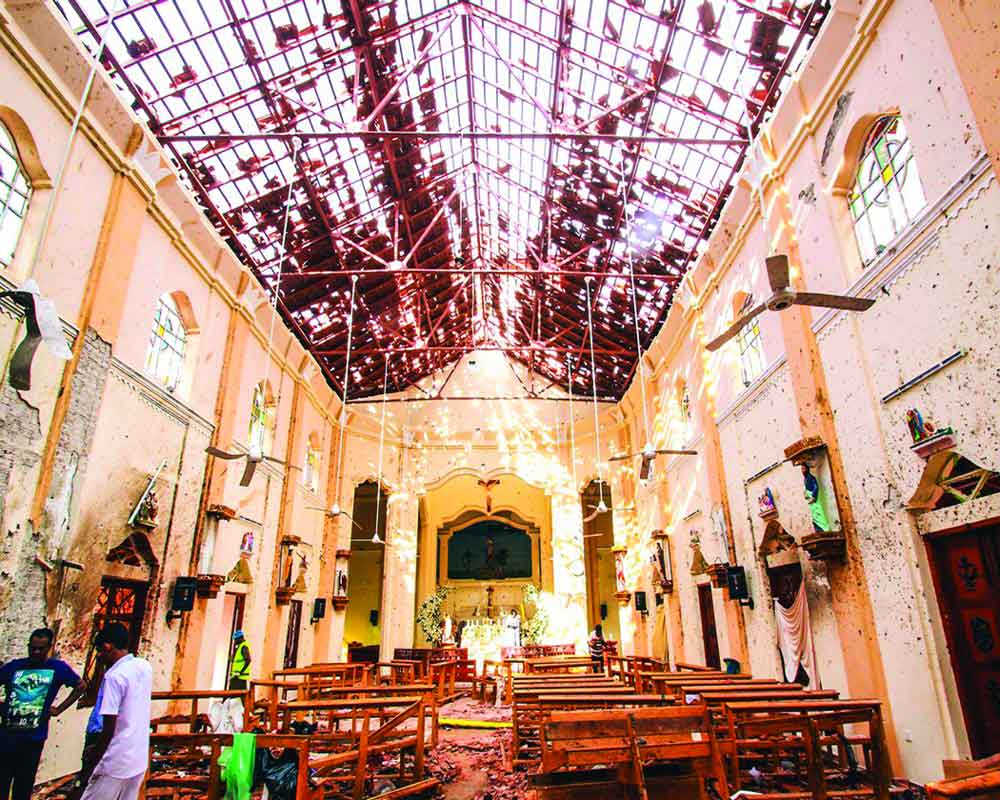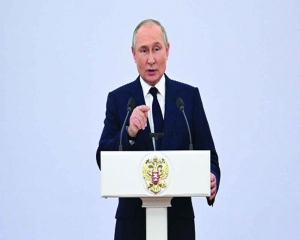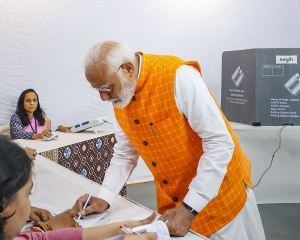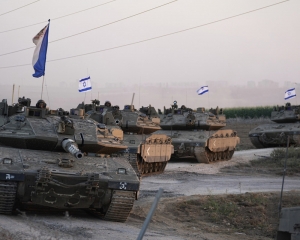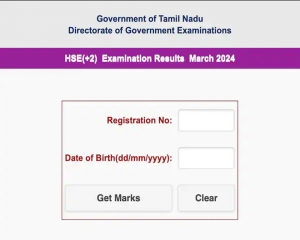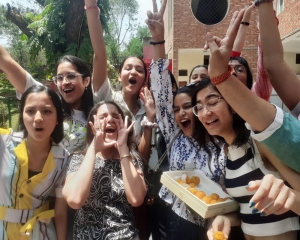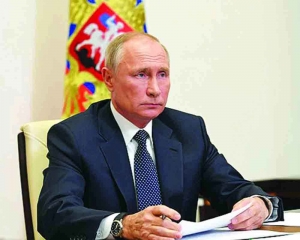As the island nation grapples with the aftermath of the attack, the intricate web of extremism and intelligence failures continues to haunt it even five years later
When conspiracy theories gain traction and permeate the public consciousness, they inevitably taint the discourse surrounding the event in question. This phenomenon is especially pronounced in politically charged contexts. Five years ago, amidst the Easter attack on tourist hotels, two Catholic churches and a Zion church in Western and Eastern provinces, a plethora of conspiracy theories surfaced. Initially, speculation swirled suggesting the involvement of a powerful Western nation, followed by theories positing the attack as a ploy to consolidate political power. More recently, local politicians and various social groups have propagated the notion that India orchestrated the attack. Yet, none of these claims have been substantiated with credible evidence. Meanwhile, the culpability of the investigating officers’ negligence, which played a role in the tragedy, has been overshadowed by these baseless allegations. Instead of being held accountable, those partially responsible have reshaped the narrative to deflect blame onto others.
However, in the aftermath of the attack, public media reports surfaced alleging that prominent politicians and Government officials were aware of the impending threat. Some even openly discussed this matter. Additionally, a leaked classified document from the police indicated forewarning of an imminent attack. What followed was not just the proliferation of various interpretations but also the dissemination of misconceptions. For instance, blame was swiftly pinned on the State Intelligence Service, the country’s premier intelligence agency, extending to judicial indictments. However, a more rational examination, grounded in verifiable data, reveals a different societal reality. It uncovers a systemic failure across institutions tasked with national security and a disregard for prior warnings. Furthermore, it exposes concerted efforts to downplay this negligence for political gain. In a nation scarred by nearly four decades of internal conflict and widespread devastation, such institutional negligence sadly becomes almost unsurprising. It’s crucial to highlight overlooked facts concerning the attack in question.
Leading up to the incident in question, there was a noticeable proliferation of extremist factions advocating violence across Sri Lanka. This surge wasn’t limited to Muslim extremist groups but encompassed various ideological factions, each pursuing distinct political agendas. The emergence of the Islamic State in West Asia particularly bolstered the prospects of extremists across different nations, with Sri Lanka serving as a pivotal transit hub.
Investigations have revealed a significant influx of extremists from regions like Kerala, as well as countries such as the Maldives, into Sri Lanka. It’s evident that intelligence agencies within the region, including those of Sri Lanka and Western nations, amassed substantial intelligence on these activities and collaborated in information sharing. Testimony from the wife of Zahran Hashim, a ringleader of the carnage, attests to the financial backing he received from a Singaporean national to establish his initial mosque. She further detailed Zahran’s extensive involvement in extremist endeavours, including recruiting adherents and garnering financial and logistical support throughout the country.
This revelation sheds light on the proliferation of extremism in Sri Lanka, culminating in the Easter attack and subsequent incidents like the suicidal blast at the Sainthamaruthu house, where Zahran’s family last resided. Zahran and his cohorts have exhibited affiliations with extremist ideologies and have been inspired by the Islamic State. Moreover, Sri Lankan nationals who joined the organisation’s ranks in Syria have been observed exerting influence on local activities. Between 2014 and 2018, a staggering 41,490 individuals from 91 nations travelled to Syria to support the Islamic State, including 32 Sri Lankans.
Exploiting this influx, organisations espousing extremist ideologies, under various guises, began proliferating throughout Sri Lanka. Additionally, individuals of Sri Lankan origin who attempted to travel to Syria via Turkey but were unsuccessful have returned home and aligned themselves with figures like Zahran. Simultaneously, the ideological backing of Mohamed Naufar, known as the “second emir” and a close relative-specifically, the husband of Zahran’s maternal aunt-played a pivotal role. Naufar, identified by the FBI as the mastermind behind the attack, exerted significant influence on the events.
Since March 2017, there have been eleven significant incidents leading up to the Easter attack, yet none have undergone thorough investigation. This failure on the part of investigative agencies, which were supposed to act on precious intelligence passed on to them, has been perceived as a deliberate effort to conceal the underlying truth of the entire episode from society, thereby impeding the crucial lessons to be gleaned from this tragedy.
The series of events began with a clash at Kattankudy Aliyar junction on March 10, 2017. Following this conflict, police attempted to arrest Zahran, but their efforts proved unsuccessful. Subsequently, on May 17, 2017, a member of National Thowheeth Jama’ath was shot. This was followed by a bomb thrown at the National Front for Good Governance (NFGG) Mohammad Farzan’s house on February 06, 2018 and another bomb thrown at the NFGG Kattankudy office on February 12, 2018.
Further escalations occurred with the shooting of Palani Bawa in Kattankudy on June 08, 2018 and the detonation of a bomb by Zahran’s brother Rilwan in Arayampathy on August 26, 2018, resulting in injuries and fatalities at Wavnathiv police post on November 30, 2018. The incidents continued with the vandalism of religious statues in Mawanella on December 23, 2018 and further vandalism on January 16, 2019, related to providing information about the destruction of statues and concealment of explosive materials in Vanathavilluwa of Puttalam District.
The situation intensified with the discovery of material and the shooting of informant Raziq Mohammad Taslim on March 08, 2019, resulting in permanent disability. Finally, a motorcycle explosion in Thalankudah on April 16, 2019, just five days before the Easter attack, marked the culmination of these incidents. Numerous intelligence reports concerning these events have been received by the commissions tasked with investigating them, shedding light on the negligence of the officers responsible for the criminal investigation.
One of the most significant incidents out of these eleven took place in August 2018, involving Rilwan, who mishandled explosives, resulting in an accident. After the explosions in the Arayampathy area, Rilwan was taken to Colombo National Hospital and admitted under the name Zaheed on 26 August 2018. Investigations have confirmed that Zahran, conducting a training camp in the Hambantota area at the time, visited his brother in Colombo. The following day, 27 August 2018, Rilwan was admitted to the National Eye Hospital. Subsequently, he visited the clinics of the National Hospital on 27.09.2018, 04.10.2018, 11.18.26 and 15.03.2019. This incident occurred eight months prior to the attack, yet neither the training camps nor the incident itself were reported to any police or intelligence agencies.
Remarkably, the individual managed to conceal his identity from the National Hospital and Eye Hospital for several days. The doctor suspected of aiding in this matter has later fled the country.
Later, there was another incident identified as a dry run, which the State Intelligence Service formally reported to the Inspector General of Police as well as the head of CID, stating that the incident on 2019.04.18 was an explosive test. However, due to the lack of proper investigation into the incident until the Easter Sunday attack, a key opportunity to apprehend the perpetrators was missed.
Upon examination of the intelligence reports submitted to the investigative commissions regarding the attack, it becomes evident that not only did the local intelligence agency provide information, but also the Indian Intelligence Bureau (IB), India’s internal security and counter-intelligence agency under the Indian Ministry of Home Affairs, accurately foresaw the impending attacks. This information was disseminated not only to the then Inspector General of Police and the Secretary of the Ministry of Defense but also to the officers responsible for crime and investigation.
Their acknowledgement of receiving this crucial information is documented. Despite being forewarned, no preventive measures were taken to thwart the attack. This apparent failure to act raises serious questions about accountability and highlights a disturbing trend of negligence. That was a collective failure.
The balance sheet of five years since this tragedy is that there has been a concerted effort to obscure the truth by proliferating conspiracy theories, thereby masking this dereliction of duty. This deliberate attempt to deflect attention from institutional failures through the propagation of unfounded narratives not only undermines public trust but also obstructs the implementation of preventive mechanisms to ensure non-recurrence.
(The writer is a Sri Lankan journalist. Views are personal)













